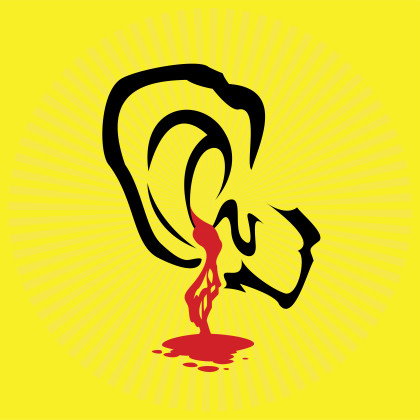Flood
What is flooding?
Flooding is an overflowing of water onto land that is normally dry. Floods can happen during heavy rains, when ocean waves come on shore, when snow melts quickly, or when dams or levees break. Damaging flooding may happen with only a few inches of water, or
1
View the legend to understand what map symbols mean. The legend box is typically listed above the title box on the right side of the map. Every symbol that appears on the map will be listed in the legend along with an explanation of what the symbol means.
After you return home, if you find that your home was flooded, practice safe cleaning.After Flooding Occurs
Avoid driving through flooded areas and standing water. As little as six inches of water can cause you to lose control of your vehicle.
Do not drink flood water, or use it to wash dishes, brush teeth, or wash/prepare food. Drink clean, safe water.
Use the scale marker to measure distance. Look for a small black and white bar, usually on the upper right side of the page. It will have a number over it, like 500 or 1000. This scale helps you get a sense of the actual distance between locations as opposed to what is shrunken down to fit on a map. This is often used to figure out where locations are on the map.
For example, your scale may have the number 500 over it. This means that every 1 in (2.5 cm) you move along the map is the same as traveling 500 ft (150 m) for real.
To find a specific location, figure out how far it is from a listed landmark. Then use the scale to measure the location on the map.
Image titled Read a FEMA Flood Map Step 8
4
Note elevation reference markers listed on the map. Your map may list a few elevations in the mapping area. These can appear anywhere on the map. The elevation is listed on the map, followed by a quick note explaining what landmark it references. You can use this to help you navigate the map and understand how the elevation affects floodwater.
For example, you may see a hill with an elevation of 50 ft (1,500 cm). This may be a high, safe point in the community in case of a flood.
Image titled Read a FEMA Flood Map Step 9broken down into separate panels. The index lists each community, followed by a corresponding panel number.[2]
The index will also have a range indicating how many panels are included in the map. For example, 001-005 means the map has 5 panels.
Image titled Read a FEMA Flood Map Step 3
3
The Flood of Noah’s day (2348 BC) was a year-long global catastrophe that destroyed the pre-Flood world, reshaped the continents, buried billions of creatures, and laid down the rock layers. It was God’s judgment on man’s wickedness and only eight righteous people, and representatives of every kind of land animal, were spared aboard the Ark.
From The New Answers DVD 3Have immunization records handy (or know the year of your last tetanus shot).
Store immunization records in a waterproof container.
Bring in outdoor possessions (lawn furniture, grills, trash cans) or tie them down securely.
If evacuation appears necessary, turn off all utilities at the main power switch and close the main gas valve.
Z-fold flood maps are similar to road maps. They fold out into 1 large map.
Image titled Read a FEMA Flood Map Step 4
5
Read the map’s inset notes to find panels for special areas. Inset notes are printed directly on the map panels. In certain spots, you may see words like “See Panel 6” or “Panel not printed.” These notes are not on every map, but when they are, they explain how you can view specific map areas.
Some areas, such as small areas with complicated flood zones, are printed in their own panels. Both the map and index will indicate which panel you should view.
If a panel isn’t printed, this is because the entire area falls within one flood insurance risk zone. Read the index page for more information.
Leave areas subject to flooding such as low spots, canyons, washes, etc. (Remember: avoid driving through flooded areas and standing water.)
Flooded street
there are thunderstorms in the area. A creek only 6 inches deep in mountainous areas can swell to a 10-foot deep raging river in less than an hour if a thunderstorm lingers over an area for an extended period of time. Sometimes the thunderstorms that produce the heavy rainfall may happen well upstream from the impacted area, making it harder to recognize a dangerous situation.
Very intense rainfall can produce flooding even on dry soil. In the West, most canyons, small streams and dry arroyos are not easily recognizable as a source of danger. The causative rainfall can occur upstream of the canyon, and hikers can be trapped by rapidly rising water. Floodwaters can carry fast-moving debris that pose significant risks to life.
Additional high-risk locations include recent burn areas in mountains, and urban areas from pavement and roofs which enhance runoff.
Ice jams and snowmelt can help cause flash floods. A deep snowpack increases runoff produced by melting snow. Heavy spring rains falling on melting snowpack can produce flash
Psalm 104:6–9 sheds important additional light on the geological effects of the Flood. “The mountains rose, the valleys sank down to the place which You established for them” (vs. 8).
Arrange the panels if the map is paper. FEMA makes a few different paper flood maps, so you may need to do some assembling before you can read yours. Take out all the numbered panels included within the map. Set them on a flat surface. Make sure the small arrow, positioned above the informational box on the right side, points upwards.
A flat flood map includes multiple pages. Each page is a panel displaying a different part of the map.
6
Check the map’s footnotes for non-flood prone communities. Footnotes are printed at the bottom of some maps and index pages. If a community doesn’t have a flood map, it will still be listed in the index. The footnote will inform you that the community is not considered prone to flooding.
flooding. Melting snowpack may also contribute to floods produced by ice jams on creeks and rivers. Thick layers of ice often form on streams and rivers during the winter. Melting snow and/or warm rain running into the streams may lift and break this ice, allowing large chunks of ice to jam against bridges or other structures. This causes the water to rapidly rise behind the ice jam. If the water is suddenly released, serious flash flooding could occur downstream. Huge chunks of ice can be pushed onto the shore and through houses and buildings.
FEMA flood maps are a useful tool you can access to gain awareness of the chances of flooding in your area. These maps divide areas into risk zones indicating the frequency and severity of flooding. Each map includes an index page and a legend explaining any numbers and symbols that appear on it. Flood maps are easy to understand, so take advantage of them to prepare for the chance of flooding in your area.Part
1
Assembling the MapDownload Article
Noah Did More than Build an Ark
Like people today, almost certainly the people of Noah’s day were busy enjoying the pleasures of life and did not believe or care that judgment was coming. In 2 Peter 2:5, Noah is described as a “preacher of righteousness.”Psalm 104 and the Flood
Non-floodprone communities are far less likely to flood. However, it can still happen, especially in severe weather.
Part
3
Using the LegendDownload Article
Image titled Read a FEMA Flood Map Step 11
Use the zone designation letters to gauge the flooding risk. The legend explains the letter combinations representing zones on the map. The lettering starts at A in most areas and V for coastal areas. Later letters in the alphabet indicate a lower flooding risk.
For example, any area labeled A has a high risk of flooding. An area labeled D has a minimal flooding risk.
4
Locate the panel number on the panel’s title box. Each panel will have a title box, typically in the lower right corner. The title box contains all the clerical information about the panel, including the panel number. To view a particular area, select the panel with the same number listed in the index.
The title box also lists the community name, the date the map was made, and other identification information.
Part
2
Finding Locations on the MapDownload Article
Image titled Read a FEMA Flood Map Step 5
1
Use the grid coordinates to locate flood-prone streets. Some maps include a list of flood-prone streets on the index page. Each street will be listed with a pair of coordinates, such as “A-2.”
Prevent carbon monoxide (CO) poisoning. Use generators at least 20 feet from any doors, windows, or vents. If you use a pressure washer, be sure to keep the engine outdoors and 20 feet from windows, doors, or vents as well. Never run your car or truck inside a garage that is attached to a house even with the garage door open.
The initial damage caused by a flood is not the only risk. Standing floodwater can also spread infectious diseases, bring chemical hazards, and cause injuries.
After you return home, if you find that your home was flooded, practice safe cleaning. Remove and throw out drywall and insulation that was contaminated with floodwater or sewage. Throw out items that cannot be washed and cleaned with a bleach solution: mattresses, pillows, carpeting, carpet padding, and stuffed toys. Homeowners may want to temporarily store items outside of the home until insurance claims can be filed. See recommendations by the Federal Emergency Management Agency (FEMA)external icon.
Clean walls, hard-surfaced floors, and other household surfaces with soap and water and disinfect with a solution of one cup of bleach to five gallons of water.Mountains and steep hills produce rapid runoff, which causes streams to rise quickly. Rocks and shallow, clayey soils do not allow much water to infiltrate into the ground. Saturated soils estimate where specific properties are located on the map.
For example, you might see Acadia and Birch roads labeled next to a pond. Use these landmarks to estimate the relative location of your home.
Image titled Read a FEMA Flood Map Step 7
3
The coordinate system is listed along the edges of the map. Find the coordinates on the map to locate the street.[3]
The letter coordinate is listed on the left side of the map and the number coordinate is on the top.
For coordinates A-2, for example, find the A row on the left. Then count 2 squares to the right.
Image titled Read a FEMA Flood Map Step 6
short amount of time. They can happen within minutes of the causative rainfall, limiting the time available to warn and protect the public.
Where and when do floods occur?
Flooding occurs in every U.S. state and territory, and is a threat experienced anywhere in the world that receives rain. In the U.S. floods kill more people each year than tornadoes, hurricanes or lightning.
What areas are at risk from flash floods?
Densely populated areas are at a high risk for flash floods. The construction of buildings, highways, driveways, and parking lots increases runoff by reducing the amount of rain absorbed by the ground. This runoff increases the flash flood potential.
Sometimes, streams through cities and towns are routed underground into storm drains. During heavy rain, the storm drains can become overwhelmed or plugged by debris and flood the roads and buildings nearby. Low spots, such as underpasses, underground parking garages, basements, and low water crossings can become death traps.
Areas near rivers are at risk from floods. Embankments, known as levees, are often built along rivers and are used to prevent high water from flooding bordering land. In 1993, many levees failed along the Mississippi River, resulting in devastating floods. The city of New Orleans experienced massive devastating flooding days after Hurricane Katrina came onshore in 2005 due to the failure of levees designed to protect the city.Dam failures can send a sudden destructive surge of water downstream. In 1889 a dam break upstream from Johnstown, Pennsylvania, released a 30-40 foot wall of water that killed 2200 people within minutes.2
Use landmarks to find specific locations on a map. You may notice that the maps don’t have a lot of details. Flood maps only list major roads, some secondary roads, and landmarks like
Combination letters like AE show that the legend and map provide extra information about
can also lead to rapid flash flooding. Camping or recreating along streams or rivers can be a risk if
If you evacuated, return to your home only after local authorities have said it is safe to do so.
Listen for boil water advisories. Local authorities will let you know if your water is safe for drinking and bathing.
During a water advisory, use only bottled, boiled, or treated water for drinking, cooking, etc.
When in doubt, throw it out! Throw away any food and bottled water that comes/may have come into contact with floodwater.
For example, a dark line can be a high-risk flood zone boundary. A lighter line can be a lesser-risk flood zone boundary. A slash can represent a water barrier.
The legend is like a key that helps you unlock the map’s meaning. Since the symbols differ between maps, always take a look at the legend.
Image titled Read a FEMA Flood Map Step 12
2
Noah’s Flood: a Historical, Global Catastrophe
Examining the immense biblical data for Noah’s flood as an actual, year-long, worldwide, and catastrophic flood about 4,500 years ago.
Was Noah’s Flood Global?
Did Noah experience a local flood which left only a few sediment layers, as floods do today? God’s record is clear: the water covered the entire globe and killed all the animals on earth. Such unique conditions are the only way to explain worldwide fossil-bearing layers thousands of feet deep.
Local Floods Help Us Understand Noah’s Flood Geology
Geologists repeatedly discover the catastrophic effects of local flooding on the earth’s surface, resulting in the same conclusion each time: that substantial amounts of water can have the same geological effect in a short period of time (even laying down rock layers) that hypothesized millions of years of slow water flow would have.
it may cover a house to the rooftop. Floods can occur within minutes or over a long period, and may last days, weeks, or longer. Floods are the most common and widespread of all weather-related natural disasters.Flash floods are the most dangerous kind of floods, because they combine the destructive power of a flood with incredible speed. Flash floods occur when heavy rainfall exceeds the ability of the ground to absorb it. They also occur when water fills normally dry creeks or streams or enough water accumulates for streams to overtop their banks, causing rapid rises of water in a
Each year, more deaths occur because of flooding than any other hazard related to thunderstorms. The most common flood deaths occur when a vehicle is driven into hazardous floodwater. Fortunately, you can take steps to protect yourself, your family, and your home.
During a Flood Watch or Warning
Gather emergency supplies, including food and water. Store at least 1 gallon of water per day for each person and each pet. Store at least a 3-day supply.
Listen to your local radio or television station for updates.Image titled Read a FEMA Flood Map Step 1
1
Get a flood map from FEMA’s map service center. You can go online to FEMA’s website and find highly-detailed digital maps. Type an area into the website’s search bar to bring up the map. The maps are available at https://msc.fema.gov/portal.[1]
You can also find maps in community map repositories. These are usually at your local government’s planning or zoning office.
Image titled Read a FEMA Flood Map Step 2
2
Read the index page to find out what areas are shown on the map. The index is a separate sheet of paper listing what areas are shown on the map. Since the maps are large, they may be bridges. These landmarks are what you use to
the flooding severity and protective barriers in the area.
High-risk areas in coastal regions are labeled as V. By contrast, zones labeled X are less at risk.










Dodaj komentar
Komentiraj